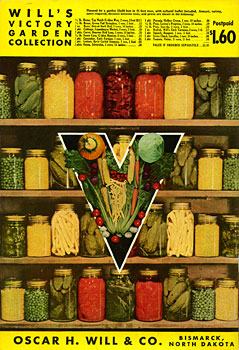When choosing a seed variety for the low desert, it is important to keep in mind that the seasons we experience in Tucson are vastly different than those experienced throughout most of the rest of the country. Because of this, you should never follow exactly the generic planting date recommendations on the seed packets you purchase online or at the grocery store. Following overly-general planting date directions can lead to some pretty disastrous results! Trust me, I learned the hard way. But we were all beginners once, I learned from my mistakes and now I am here to share my experiences with you.
Here in Tucson, we are fortunate enough to have one of the largest native seed banks in the country. Native Seeds/SEARCH is a non-profit organization that collects and distributes native and adaptable seeds of the desert Southwest. These seed varieties are adapted to our climate and have been grown in this region for hundreds of years by the native people of the Southwest. I encourage you all to check them out and try to plant some of these native plants in your garden so that you too can continue on the tradition of seed saving.
How do you know what seed varieties to pick though? Well, that all depends really. With so much selection it can be very confusing, but don't worry, I assure it is not. If you wish to save your own seed, and I strongly encourage that you do, then Open Pollinated (OP) or Heirloom varieties are the seeds for you! Simply put, an "OP" seed is one that has been bred over many years and has stabilized traits. Heirloom seeds have been around the longest amount of time, in some cases, hundreds of years. Just as with hybrids, selecting OP or heirloom varieties with the shortest days to harvest and that are also resistant to pests and diseases will perform the best in our growing seasons. It also helps when selecting any seed, hybrid or OP, to look for the words "Drought Tolerant." This means that the plant can hold up to hot weather and won't croak the first time you forget to water! Sometimes a variety may be a short season, but prefer cool weather. In this case the particular plant probably wouldn't do so well here. When in doubt, call up the seed company and ask what varieties customers in our area have had success with, most of the time companies are more than willing to share a little bit of knowledge based on customer feedback.

As a generality, disease-resistant Hybrid varieties with the shortest days to harvest also do the well in our climate. A hybrid variety of seed is one that was produced by artificial cross pollination. Because of these controlled conditions, hybrid plants can be bigger, stronger, more nutritious and more resistant to pests and diseases than their parent plants. Unfortunately, the seeds of hybrid plants can not be harvested, so you are forced to buy a new batch of seed every year if you wish to continue growing the same crop. Hybrid seeds are often listed in catalogs with the distinction F-1 (or F1), but some catalog companies may use a different notation, you should always double check just to be sure.
I some cases starting a crop from seed is not the best option for the desert gardener. Tomatoes are the classic example. Here in Tucson, if you wish to grow tomatoes from seed, you would need to start the seeds indoors or in a green house in December or January, and put your transplants out in February in order to be able to harvest a crop before the heat of May sets in. For most people, including myself, this is just not practical. Unfortunately, this really limits the selection of plants available to us because often nurseries will only have 1 or 2 Transplant varieties of any given vegetable, and more often than not those varieties aren't adapted for our climate and seasons. Many seed companies are now beginning to offer transplant varieties for shipment of some plants. Transplant selection is growing each year but if you want the most choices you will need to start from seed. In our climate, I recommend always starting tomatoes from transplants and never from seed, unless you have a green house. Other plants that do well from transplants are the long-growing crops like Brussels sprouts, cabbage, eggplant, peppers, squash and melons. Conversely, there are a few plants that you should always plant from seed, these include mostly the root crops like carrots, radishes and turnips. Beans, peas, and corn also do poorly when transplanted and should always be planted from seed. Onions can be planted from seed (bunching) or as bulbs that will clump and will require you to divide later.
Need some ideas for inspiration? Check out this list of 48 Free Seed Catalogs that you can order and start planning for your fall garden. D. Landreth Seed Company, is a personal favorite of mine but their beautiful catalog will set you back a few bucks, well worth it to support America's oldest seed purveyor.

